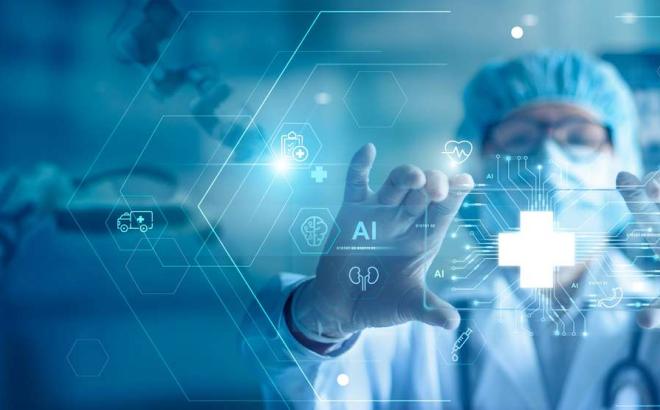4th European Calcium Channel Conference in Alpbach
The 4th European Calcium Channel Conference in Alpbach presented the latest research findings.

More than 170 researchers from around the world gathered at the Congress Centrum Alpbach (Tyrol) at the end of May 2022 following the invitation of Prof. Gerald Obermair (Karl Landsteiner University) and colleagues (from Innsbruck, Munich and Homburg) to discuss the latest findings on the role of calcium channels in health and disease. For example, how calcium channels regulate the "fight-or-flight" response, heartbeat and muscle strength, how their dysfunction leads to autism, neuropsychiatric diseases, hormonal disorders or hypertension but also how calcium channels can be used as therapeutic targets against these diseases.
Already in their first physiology lectures, medical students at Karl Landsteiner University of Health Sciences (KL) learn about the important functions of the ubiquitous messenger substance calcium. For example, the contractions of heart and skeletal muscles and the release of hormones and neurotransmitters are made possible by calcium. Special pores in cell membranes, known as calcium channels, regulate how much calcium enters cells, thereby regulating a wide range of important bodily functions. The diverse functions of calcium channels therefore represent an essential area of research in which research groups in Austria have already been able to position themselves well internationally with their expertise and research work in recent years. To offer the internationally unique platform of the European Calcium Channel Conference again for regular exchange after the long Covid break, was therefore the next logical step.
Together with colleagues from Innsbruck and Germany (Munich, Homburg/Saarland), Prof. Gerald Obermair, Head of the Department of Physiology in the research area "Mental Health & Neuroscience" at the Karl Landsteiner University, organized a five-day conference with international, top-class researchers. A total of 14 symposia with 90 lectures and an additional 80 poster presentations took place during these days. "I am very pleased that we were able to organize a really exciting congress and provide a platform for many young researchers (e.g. PhD students). We also received excellent feedback from the participants. The time for informal exchange between the many international researchers was also very important and productive," says Gerald Obermair.
New insights for cardiologyOne of the plenary lectures, for example, dealt with findings on how exactly calcium channels in the heart regulate the so-called "fight-or-flight" response, i.e. how cardiac activity can be adapted to a sudden stress in a very short time. For forty years, researchers have searched in vain for the mechanism of how adrenaline enhances calcium channel function via phosphorylation. Now the research group of Steven O. Marx (Columbia University) has been able to show that this works via an associated protein called Rad. This is an important discovery and the basis for the development of new drugs for the treatment of cardiovascular diseases.
Furthermore, a lecture was dedicated to the calcium channels in the pacemaker cells of the heart and thus to the question of how best to intervene when cardiac arrhythmias occur due to acquired or genetic diseases. Prof. Obermair explains, "To do this, it is crucial to know how the different calcium channels interact to predetermine and regulate heart rate."
Pain sensation and transmissionThe interaction between calcium channels and pain perception is also the focus of current research. For example, several types of calcium channels are involved in pain and its transmission to the brain, and their function needs to be understood, as does the question of which additional signaling pathways are involved. New therapeutically relevant approaches were also presented. In addition, the question of how to block certain calcium channels in chronic pain disorders is currently being addressed. Gerald Obermair: "In the plenary lecture by Thomas Voets (KU Leuven), the role of so-called TRP (Transient Receptor Potential) channels was highlighted. TRP channels function primarily as sensors for chemical- and heat-induced pain. Misregulation, for example as a result of inflammation, can lead to their hyperactivation, and thus normal heat and cold stimuli can suddenly lead to severe pain. The well-known sunburn is a simple example of this. Insights into their function may consequently lead to the development of new pain medications."
The role of calcium channels in autism and diabetesResearch is also enabling major advances in understanding neurodevelopmental disorders: For example, newly discovered mutations and defects have been presented that can lead to hyperfunction of calcium channels and thus cause autism. In addition to the classical electrically-activatable cells, i.e. nerve and muscle cells, the interaction of calcium channels also regulates the functions of hormones, first and foremost the release of insulin. Malfunctions of calcium channels can therefore also lead to diabetes. On the other hand, drugs that influence calcium channel functions could also be used to treat diabetes. Possible functions and approaches to this were presented in several lectures.
From the structure, to the function and innovative research techniquesUnderstanding the dynamic molecular structure of ion channels and how it controls channel opening and closing is fundamental to the future development of new drugs. The latest findings on this topic were presented in a "Special lecture" symposium with speakers Nieng Yan (Princeton University), William A. Catterall (University of Washington) and Thomas Jentsch (MDC Berlin), followed by an exciting discussion.Other topics of the congress included the latest technical developments for the study of calcium channels as well as mathematical models for understanding or simulating channel functions, described Prof. Obermair: "For example, how we can stain calcium channels and visualize them microscopically to be able to show and image them even in their smallest structures on the nanometer scale. In addition, lectures dealt with the question of how calcium channels are influenced by brain diseases, for example epilepsy or Alzheimer's disease, how the generation of force in skeletal muscles is controlled, and how special calcium channels in blood vessels can act as strain sensors to perceive mechanical changes in blood flow and how this information is passed on to the surrounding tissue and vascular muscles. All these questions are central areas of basic research and the basis for understanding their functions in healthy and sick humans."The organization and successful realization of this internationally unique congress was made possible by the long-term funding of excellence programs of the involved co-organizers, by the Austrian Science Fund (FWF), the German Research Foundation (DFG), the Leopoldina (National Academy of Sciences in Germany) and last but not least by the support of the Karl Landsteiner University of Health Sciences.
Congress pageFachbereich an der Karl Landsteiner Privatuniversität für Gesundheitswissenschaften



